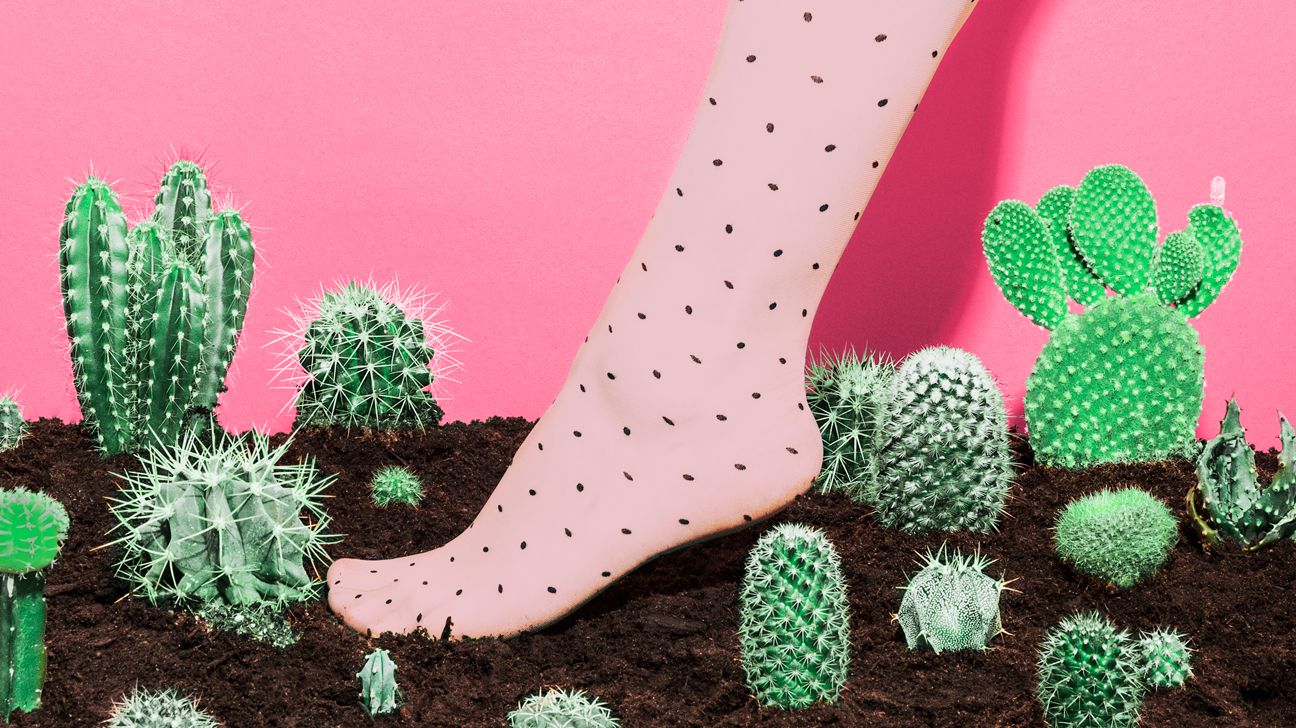Prickly heat may sound cute, but this form of heat rash is anything but.
Prickly heat (miliaria rubra, aka sweat rash) is the middle child of the heat rash fam, and most common. Its two siblings are the milder miliaria crystallina, and the rarer, more intense miliaria profunda.
Prickly heat is a result of sweat becoming trapped underneath the skin, leading to an often uncomfortable rash that causes an itchy, prickly sensation (hence the name).
Folks of all ages can get a prickly heat rash, but children are more susceptible to it, thanks to their still-developing sweat glands.
Prickly heat will usually heal itself within a matter of days. While it’s rarely a cause to rush to the doc, it can be annoying AF. Thankfully, there are easy ways you can treat and prevent prickly heat yourself.
In a word: sweat. Our bodies produce sweat to help us cool down when we’re overheated. When we begin sweating more than normal (based on whatever your normal is), it can push our glands into overdrive and cause a blockage in our sweat ducts.
When this happens, the sweat can either become trapped deep under the skin or can leak through the skin layers and get trapped near the top layer.
Prickly heat is most commonly triggered by hot weather (especially when coupled with humidity), making it more prevalent during the warmer times of year.
Not to sway you from any future tropical vacays, but prickly heat can also pose a threat for those living in cooler climates who travel to places with higher temps and moisture levels.
Certain medications are another source of prickly heat, particularly those that raise body temperature or have a direct impact on the sweat glands. Prickly heat can also develop where Staphylococcus (a bacteria) is found.
Prickly heat works on its own prickly timeline, and symptoms may show up right away or will take a few days to develop. Generally, your skin will itch and red bumps will appear in the affected area.
The rash most commonly occurs on the chest, shoulders, or neck, but can also pop up in the folds of the skin or areas where your clothing rubs the wrong way.
Reactions may vary, and in some cases, your skin may respond to the sweat trapped between its layers in a different way. Patches of small blisters may form, or the affected area may look swollen. You may also experience a constant itch in the area, which in itself can be, in the words of Jean-Ralphio Saperstein, the wooooooorst.
Much like “Fight Club,” the first rule of treating prickly heat is to avoid the cause of your prickly heat. (Okay, that may not be exactly what Brad Pitt said, but close enough, right?)
Get yourself away from whatever’s causing you to sweat it out: Get into a cooler environment, and be sure to swap any wet or sweaty clothes for clean, dry, fresh duds.
Some treatments and remedies to ease the itch include:
- topical steroids
- calamine lotion
- swapping tighter clothes for looser-fitting ones
- staying away from products with mineral oil or petroleum
- anhydrous lanolin
With its skin-cooling properties, calamine lotion is an especially great natural remedy. Apply it to the impacted area and feel the “aaaahh.” For more intense cases, a low-dose topical steroid like hydrocortisone cream can help you lose that itching feeling.
Think of prickly heat as your crazy college ex: The best way to prevent running into them is avoidance. Steer clear of situations that can lead to excessive sweating and take plenty of cool showers when traveling to hot or humid places.
When you do partake in sweat-filled activities, opt for breathable clothing that’s looser-fitting or made from moisture-wicking fabrics.
Other ways to prevent prickly heat:
- Avoid pore-clogging lotions and creams.
- Choose moisturizing soaps sans fancy fragrances or dyes.
- Take advantage of that sweet A/C to beat the heat.
- Keep yourself hydrated.
Prickly heat will typically clear up on its own and is rarely cause for alarm. It’s important, however, to keep an eye on your heat rash and note any changes or additional symptoms you may develop.
Be sure to avoid excessively itching your rash, as this can create a wound and lead to infection.
Should you experience any of the following symptoms, it’s time to call your healthcare provider if:
- prickly heat rash worsens or becomes infected
- you frequently develop prickly heat
- you experience fever, chills, or pain
- pus-filled bumps appear
- you think you could have something more serious
If you find you’re sweating too much, talk to your dermatologist. This may be a sign of hyperhidrosis, a condition that causes the body to produce too much sweat.
Should you find yourself in a situation that puts you at risk for prickly heat or other heat-related conditions, be sure to stay hydrated and get to cooler areas ASAP. You’ll also want to be on the lookout for other signs of heat exhaustion, such as rapid heartbeat, dizziness, or headache.


